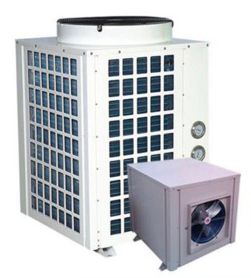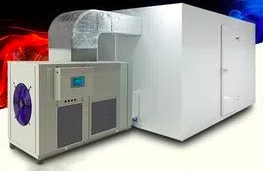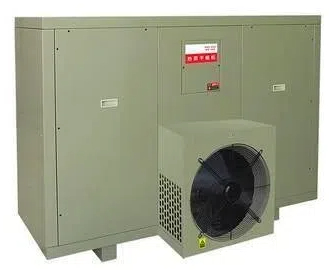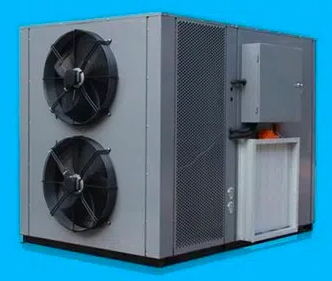
Content Menu
● Introduction
● How Heat Pump Dryers Work
● Benefits of Heat Pump Dryers
>> Energy Efficiency
>> Gentle Fabric Care
>> Versatile Installation Options
● Advanced Features and Technology
● Environmental Impact
● Maintenance and Care
● Cost Considerations
● Future of Laundry Technology
● Frequently Asked Questions
>> Q1: How much energy do heat pump dryers save compared to conventional dryers?
>> Q2: Do heat pump dryers take longer to dry clothes?
>> Q3: Can heat pump dryers be installed anywhere?
>> Q4: How long do heat pump dryers last?
>> Q5: Are heat pump dryers worth the investment?
Introduction
Heat pump dryers represent a revolutionary advancement in laundry technology, offering an energy-efficient and environmentally friendly alternative to conventional clothes drying methods. These innovative appliances are transforming how we think about laundry care while significantly reducing energy consumption and environmental impact.
How Heat Pump Dryers Work
Heat pump dryers operate on a sophisticated closed-loop system that sets them apart from traditional dryers. Instead of expelling warm air outside, they recycle and reuse heat throughout the drying cycle. The process begins when warm air circulates through the drum, absorbing moisture from wet clothes. This moisture-laden air then passes through an evaporator, which cools the air and condenses the water vapor. The collected water is either drained away or stored in a reservoir for later removal.
The cooled, dehumidified air then moves through a condenser, where it's reheated and circulated back into the drum. This continuous cycle of heating, moisture removal, and air recycling makes heat pump dryers incredibly efficient compared to conventional models.

Benefits of Heat Pump Dryers
Energy Efficiency
One of the most compelling advantages of heat pump dryers is their exceptional energy efficiency. By recycling heat instead of continuously generating new heat, these appliances use significantly less electricity than conventional dryers. This efficiency translates to lower energy bills and a reduced carbon footprint.
Gentle Fabric Care
Heat pump dryers operate at lower temperatures than traditional dryers, making them gentler on clothes. This lower-temperature drying helps preserve fabric quality, reduce wear and tear, and extend the life of your garments. The gentle drying process is particularly beneficial for delicate items and temperature-sensitive materials.
Versatile Installation Options
Unlike conventional vented dryers, heat pump models don't require external ventilation. This ventless design offers greater flexibility in terms of installation locations, making them ideal for apartments, condominiums, and homes where external venting isn't possible or practical.
Advanced Features and Technology
Modern heat pump dryers come equipped with sophisticated features that enhance their functionality and user experience. Smart connectivity allows users to monitor and control their dryer remotely through smartphone apps. Advanced moisture sensors ensure optimal drying times and prevent over-drying, while multiple program settings cater to different fabric types and drying needs.

Environmental Impact
The environmental benefits of heat pump dryers extend beyond energy efficiency. Their closed-loop system means they don't release hot, humid air into the environment, which can affect indoor air quality and humidity levels. Additionally, the reduced energy consumption leads to lower greenhouse gas emissions, making them a more sustainable choice for environmentally conscious consumers.
Maintenance and Care
Maintaining a heat pump dryer is relatively straightforward but essential for optimal performance. Regular cleaning of the lint filter and heat exchanger, emptying the water container (if not directly plumbed), and ensuring proper ventilation around the unit are key maintenance tasks. While these dryers may require more initial attention to maintenance, their long-term benefits often outweigh the additional care requirements.
Cost Considerations
While heat pump dryers typically have a higher upfront cost compared to conventional dryers, the long-term savings on energy bills can make them a cost-effective investment. The energy efficiency of these appliances often results in significant savings over their lifetime, helping to offset the initial purchase price.
Future of Laundry Technology
As technology continues to advance, heat pump dryers are expected to become even more efficient and sophisticated. Manufacturers are constantly developing new features and improvements, from enhanced energy efficiency to better moisture sensing and smart home integration capabilities.

Frequently Asked Questions
Q1: How much energy do heat pump dryers save compared to conventional dryers?
A1: Heat pump dryers typically use 50-60% less energy than conventional dryers, resulting in significant savings on energy bills and reduced environmental impact.
Q2: Do heat pump dryers take longer to dry clothes?
A2: Yes, heat pump dryers generally take longer to dry clothes due to their lower operating temperatures. A typical cycle might take 1.5 to 2 hours, compared to about an hour for conventional dryers.
Q3: Can heat pump dryers be installed anywhere?
A3: Heat pump dryers can be installed in most locations since they don't require external venting. However, they need adequate ventilation space around the unit and access to a drain or a way to empty the water container.
Q4: How long do heat pump dryers last?
A4: With proper maintenance, heat pump dryers can last 10-15 years or more, often outlasting conventional dryers by several years.
Q5: Are heat pump dryers worth the investment?
A5: For most households, heat pump dryers are worth the investment due to their energy efficiency, gentle fabric care, and long-term cost savings, particularly in areas with high electricity rates or for families who do frequent laundry.












